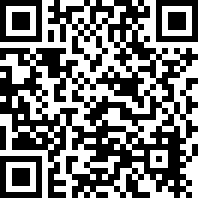Ling U
Ling U
Ling U
Ling U
Ling U
Inaugural Chamber of Young Snow
Distinguished Visiting Scholars Programme
Webinar Series 2021/22

Thijs WESTSTEIJN
Professor of Art History, Utrecht University| Date | : | 3 December 2021 (Friday) | ||
| Time | : | 4:00-5:30 pm HKT/ 9:00-10:30 am CET | ||
| Venue | : | Webinar (Zoom) | ||
| Language | : | English | ||
| ILP | : | 1.5 units (AES) | ||
| Registration | : |

Scan to Register
| Biography |
|---|
| Thijs WESTSTEIJN is professor of art history at Utrecht University, where he studies early modern European art in the context of cultural history. His research focuses on the Dutch seventeenth century and the global connections that shaped it, as well as the opportunities that artworks from beyond Europe provide to look back at the Netherlands. He chairs the research project ‘Histories of Global Netherlandish Art, 1550-1750.' Recent publications include Foreign Devils and Philosophers: Cultural Encounters between the Chinese, the Dutch, and Other Europeans, 1590-1800 (Leiden: Brill, 2020) and Een wereldse kunst (Oratie Universiteit Utrecht, 2017). |
| Abstract |
| This paper discusses four of the earliest Chinese visitors to Europe and their representation in art and literature. All of them arrived via the Netherlands, traveling on the ships of the Dutch trading companies that had established the fastest and most reliable route. A Chinese merchant called Yppong was baptized in Middelburg in 1600 and was portrayed by no less than Peter Paul Rubens. Then, in 1654, Dominicus Fichinpai, the Chinese assistant of Martino Martini, arrived in Amsterdam. With his calligraphy and knowledge of Portuguese he seems to have made a special impression on a man from Morocco and on the Dutch ‘prince of poets’, Joost van den Vondel, who went on to write a play set in China. Among a group of five Chinese converts who planned to travel to the Low Countries in the 1660s, only one made it: the well-known Michael Shen, whose portrait was painted by Godfried Kneller. Finally, in 1705, the medical doctor Zhou Meiye came to Amsterdam in the company of a governor of the East India Company; various drawings related to his visit survive. As will become clear, the representations of China and the Chinese in paintings, drawings, and texts that are directly related to the visit of these four men, are different from what was presented in travelogues. The materials shine an entirely new light on the dynamic of Western stereotyping of the Chinese ‘Other’ in the seventeenth century. |
| Moderator |
| Michelle Ying-Ling HUANG |


